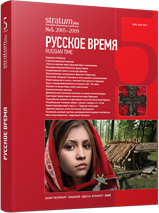«Пути» в картине мира средневековых скандинавов
Vegar in the Weltbild of Medieval Scandinavians
Author(s): Tatjana N. JacksonSubject(s): History, Cultural history, Historical Geography, Middle Ages, Cultural Anthropology / Ethnology, 6th to 12th Centuries
Published by: Издательский дом Stratum, Университет «Высшая антропологическая школа»
Keywords: Vegar in the Weltbild; Medieval Scandinavians; Nуregr; Austrvegr
Summary/Abstract: The article is dedicated to the mental map of medieval Scandinavians as reflected in the ethnogeographic nomenclature of the Old Norse texts. The author shows the development of place names ending in -vegr, and connects their origin with the four-partial subdivision of the world. According to the sources, the original pattern for the place names in question was the “cardinal direction + vegir / vegar (Pl. from vegr “way, rout”)”: Austrvegir, Vestrvegir, Suрrvegar, Norрrvegar. Eventually the root veg- in these composite names changed its semantics, and by the time of their written fixation they came to mean not the routs, but the lands along those routs. Thus, Austrvegr finally turned into a designations of lands beyond the Baltic, while Nуregr (< *Norрvegr) became a name of a country, today’s Norway. Thus, vegar “routs” are viewed here as means of space development, but they are considered not to coincide with the assimilated territories.
Journal: Stratum plus. Археология и культурная антропология
- Issue Year: 2009
- Issue No: 5
- Page Range: 524-528
- Page Count: 5
- Language: Russian
- Content File-PDF

